Publication
Article
Oncology Influencers Explain Do’s and Don’t’s of Social Media
Author(s):
Oncologists discuss the use of social media in oncology.
Don S. Dizon, MD
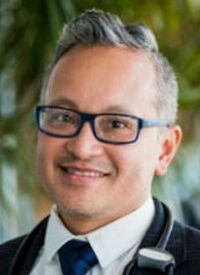
Don S. Dizon, MD, dances in TikTok videos. On Twitter, he does heartfelt voiceovers about caring for patients with cancer as he puts on a matching tie and face mask, which he makes himself. At other times, as he gets dressed, a voiceover of Maya Angelou reads 1 of her poems.
Through such touching moments, Dizon, who is a professor of Medicine at Brown University, the director of Breast and Pelvic Malignancies at Lifespan Cancer Institute and the director of medical oncology at Rhode Island Hospital in Providence, has been able to break barriers of cancer communication.
“The general public generally doesn’t pay attention to cancer-related content, until they are affected by it personally or with a loved one,” he said in an interview with OncLive®. “There has always been this question of how to increase cancer awareness in the general public. That sparked this idea of using these videos on TikTok. People are looking for voices they can reliably count on.”
There is no doubt that the use of social media has exploded in the past 15 years. In 2005, just 5% of American adults used at least 1 social media platform. By 2011, that share had risen to half of all Americans, and in 2019, 72% of the public used some form of social media, according to results of surveys conducted by the Pew Research Center.1
For patients with cancer, social media can provide support and engagement. Most platforms, including Facebook, Twitter, and YouTube, have cancer-specific content. Patients with cancer appear to be most active on Twitter, with 26.5% of conversations around cancer happening on this platform, according to an analysis conducted in 2019 by social media analytics company Synthesio.2
Women aged 18 to 34 years are the most vocal participants online, according to Synthesio. About one-third of these conversations (33.2%) revolve around diagnosis. Support is the next most-talked about topic (27.6%).
Social media is a great avenue for patients, patient advocates, residents, and fellows to get access in real time to information, said Tatiana M. Prowell, MD, associate professor of oncology at The Johns Hopkins Sidney Kimmel Comprehensive Cancer Center in Baltimore, Maryland.
Tatiana M. Prowell, MD

“This is a big reason why I am on Twitter: This is a democratized access to knowledge,” she said at the 38th Annual Chemotherapy Foundation Symposium® (CFS®) virtual conference in November. “I like the ability to interpret science and medicine for a broader audience.”
Prowell, who has more than 26,000 followers on Twitter, said social media provides an opportunity to provide accurate public health information and to counteract misinformation, especially regarding coronavirus disease 2019 (COVID-19). “We have to be in this space to accurately interpret information,” she said. “We might be oncologists but we are also health care workers, which means we have a huge role in getting out accurate information about the pandemic.”
For Lecia Sequist, MD, MPH, her use of Twitter has evolved over time. As director of the Center for Innovation in Early Cancer Detection at Massachusetts General Hospital in Boston, she thought she would use this platform for professional purposes, posting, and keeping updated about lung cancer, her specialty.
Lecia Sequist, MD, MPH
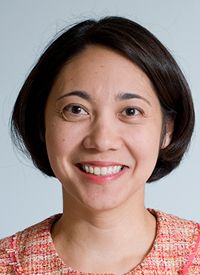
“Over time, I’ve realized how powerful #MedTwitter can be,” she said in an interview. “As I’ve learned more about the platform and grown more comfortable, I have started tweeting about a broader range of issues adjacent to lung cancer, including health care policy and health-care topics that could be categorized as political such as gun control and equity.”
She said tweets that especially resonate with her followers are about the stigma faced by patients who receive a diagnosis of lung cancer. “It is a good way to get a message out,” she said. “But it’s also a platform to have a conversation, either with other experts or with patient advocates.”
Dizon, who has 11,000 followers on Twitter, said he responds to everyone who comments on his posts. “I believe in bidirectionality,” he said.
Using Social Media to Communicate With Colleagues
Physicians’ use of social media appears to be increasing, and Twitter is a favored platform, although it is difficult to estimate how many oncologists are active users of social media.3 Findings from a 2016 survey of Canadian oncology physicians and oncology trainees showed that physicians aged 25 to 34 years were more likely than those in other age groups to post on social media platforms.4 Barriers to social media use cited by the respondents included not having the time, preferring more traditional ways of accessing medical news, and concerns about privacy.
More recently, a presentation at the 2020 American Society of Clinical Oncology Virtual Scientific Program in May looked at Twitter use among 442 trainees in hematology-oncology. The survey found that 46% use Twitter for professional activities, including educating, disseminating information, and networking.5
S. Vincent Rajkumar, MD, a 2019 Giants of Cancer Care® award winner in the myeloma category, was an early adopter of Twitter. He signed up in 2009 and currently has more than 31,000 followers.
S. Vincent Rajkumar, MD
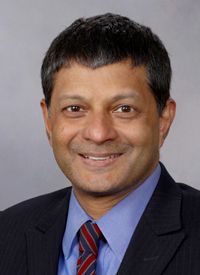
“I sensed early on that Twitter would be the perfect forum for academic discussion for a larger group of people, many of whom you may not know,” said Rajkumar, who is the Edward W. and Betty Knight Scripps Professor of Medicine and a clinical investigator at Mayo Clinic in Rochester, Minnesota.
But Rajkumar said the number of followers is not as important as the quality of the information dispersed and whether it is articulated in a clear way. “Opinions on controversial topics get a lot of attention, and tweets that pose questions also get a lot of engagement with likes and followers,” he said. “People will follow you if they find you authentic and credible. That takes time to establish.”
Connecting with peers is another reason to be active on Twitter, he said. “It’s a good medium for learning and for the dissemination of information. I do see Twitter as important for academics, just [as] papers, publications, and lectures, and can help people advance in their careers. People who are not on Twitter may be left behind,” he said.
Cathy Eng, MD, began using Twitter to make sure her patients had accurate information but she also has found a large audience among peers. She has more than 7000 followers on Twitter.
“Social media can add to your career with regard to increased recognition by peers, by patients, and patient advocates,” said Eng, who is the David H. Johnson Chair in Surgical and Medical Oncology, codirector of Gastrointestinal Oncology, coleader of the Gastrointestinal Cancer Research Program, and director of the Young Adult Cancers Program at Vanderbilt-Ingram Cancer Center in Nashville, Tennessee.
“It gives you a voice,” she said. “It is a good way to showcase some of the work you and your colleagues are doing. I’ve met a lot of people [through Twitter] I probably wouldn’t have met….I also meet a lot of individuals who thank me for posting from a meeting they couldn’t attend. That really helps update the knowledge base of community physicians as well.”
Sequist, who has more than 6600 followers on Twitter, encourages those she mentors to participate in social media after investigating the platforms they would be comfortable using. “It is a nice way to get your opinion out there, especially when you are starting out. Traditionally, before there were social media platforms, people starting out in academic medicine had to wait several years before having the opportunity to lend their opinions to the conversation. Twitter is a great platform for junior scientists to share their opinions without being interrupted and in a way that works for them,” she said.
Social media platforms also provide an avenue to discuss new research and ideas about cases, similar to an informal tumor board, Prowell said in her CFS® presentation. “It gives you a chance to build relationships and provides an opportunity to find colleagues to collaborate with. This is critical during this pandemic when we are all social distancing,” she said.
One recent study found social media is an effective tool to increase article reach and knowledge translation. Investigators looked at Altmetric Attention Scores, which assess articles’ mentions in blogs, mainstream media, and social media, and how they correlated with citations.6
Specifically, investigators reviewed 50 articles with the highest Altmetric scores published in The Annals of Thoracic Surgery in 2013, 2015, and 2017. Over time, Altmetric scores increased significantly, from 11.9 in 2013 to 24.8 in 2015 and 75.3 in 2017 (P < .001).
The percentage of authors who turned to Twitter to discuss scholarly work increased from 10% in 2013 to 20% in 2015 and 42% in 2017 (P < .001). On multivariate analysis, tweets (OR, 1.27; 95% CI, 1.01-1.61; P = .044) and mentions by news outlets (OR, 30.49; 95% CI, 4.04-230.16; P = .001) were predictive of high Altmetric scores.6
Social media also can be a valuable tool for keeping up with medical knowledge, Prowell said.
“The doubling time of medical knowledge in 1950, just by the proliferation of textbooks and news articles, was a half century,” she said. “By 1980, the doubling time was 7 years, and a decade ago it was 3.5 years, and now it is 0.2 years. It is not an exaggeration to say we just can’t keep up with medicine, and you can’t even keep with oncology. So how do we decide where to direct our attention or to ensure we aren’t missing something? I would argue social media is [the] best current approach.”
Prowell started using Twitter in 2017 during the San Antonio Breast Cancer Symposium. “I wanted to see what people were saying about the sessions I wasn’t able to attend. I also wanted to keep patient advocates and fellows I mentored who weren’t able to attend informed.”
Advice for Using Social Media
Oncology influencers have developed strategies and best practices for using social media gleaned from experience (Figure). Since she began using Twitter, Prowell said, she has learned how to employ hashtags and bots to flag content that is of greatest interest to her. She recommends using a tool such as TweetDeck as a way to manage the information coming through.
Figure. Tips for Tweeting From Oncology Influencers
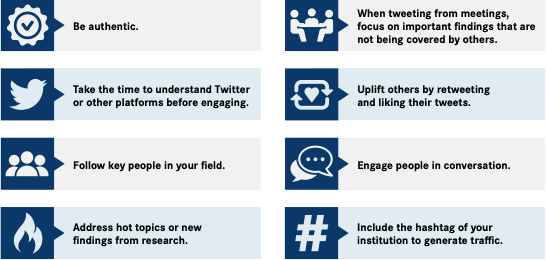
When tweeting, Prowell said, it is important to use hashtags. “They are like the labels on a filing cabinet. This is what gets the tweet to where it needs to go for people who are interested on this topic. I would encourage people, despite the character limitations, to avoid medical abbreviations because when we use them that might result in confusion that you may not intend.”
Eng stressed that the institution hashtag also should always be included. “This will help to gain an active Twitter following and lets people know where you are from.”
Dizon said the biggest lesson he has learned through his experience is to be authentic and responsive. On a broader level, Dizon suggested being cautious about requests to use your “brand” to promote messaging.
“That is a dangerous thing to do. I’ve always said no to those things. On social media as a clinician, a researcher, and an academic, we can’t do.”
Dizon is a founder of The Collaboration for Outcomes using Social Media in Oncology, which aims to inform the cancer community about the potential value of cancer communication.
“We wanted to encourage participation and engagement but also provide guidance about how to do it thoughtfully,” he said. “For those who aren’t on social media, take the time to explore the channels. Every now and then, I’ll explore a new channel and I’ll see if it is something that works for me. I think that is a question people need to ask themselves: Does this work for me?”
References
- Social media fact sheet. Pew Research Center. June 12, 2019. Accessed November 11, 2020. https://pewrsr.ch/333WNXv
- Social media data analysis to improve oncology patient care. Synthesio. September 23, 2019. Accessed November 11, 2020. https://bit.ly/332iSG0
- Markham MJ, Gentile D, Graham DL. Social media for networking, professional development, and patient engagement. Am Soc Clin Oncol Educ Book. 2018;37:782-787. doi:10.1200/EDBK_180077
- Adilman R, Rajmohan Y, Brooks E, et al. Social media use among physicians and trainees: results of a national medical oncology physician survey. J Oncol Pract. 2016;12(1):79-80. doi:10.1200/JOP.2015.006429
- Velez MG, Duma N, Cabrera D, et al. Patterns of Twitter use among trainees in hematology-oncology related areas. J Clin Oncol. 2020;38(suppl 15):11041. doi:10.1200/JCO.2020.38.15_suppl.11041
- Luc JGY, Percy E, Hirji S, et al. Predictors of high-impact articles in The Annals of Thoracic Surgery. Ann Thorac Surg. 2020;110(6):2096-2103. doi:10.1016/j.athoracsur.2020.04.102
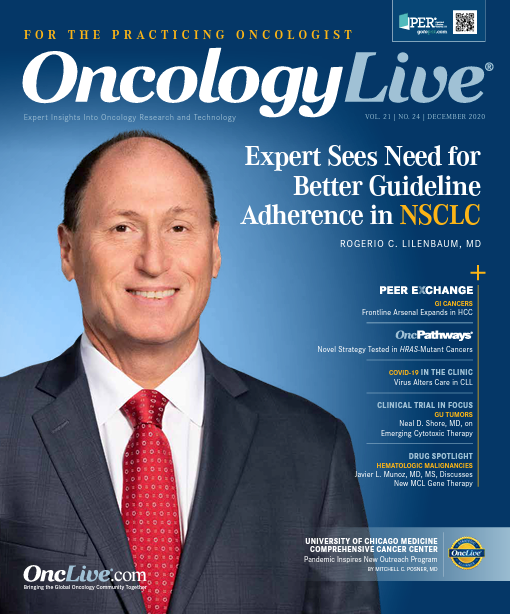
Latest Conference Coverage

Dr Backhus on Surgical Eligibility in Borderline Resectable NSCLC

Dr Herbst on the Importance of Multidisciplinary Collaboration in NSCLC

Enhanced Clinical Education and Simplified Guidelines Needed to Address Germline Testing Gaps in Breast Cancer

Research Propels Additional Options into the Advanced HER2+ Breast Cancer Armamentarium
2 Commerce Drive
Cranbury, NJ 08512




